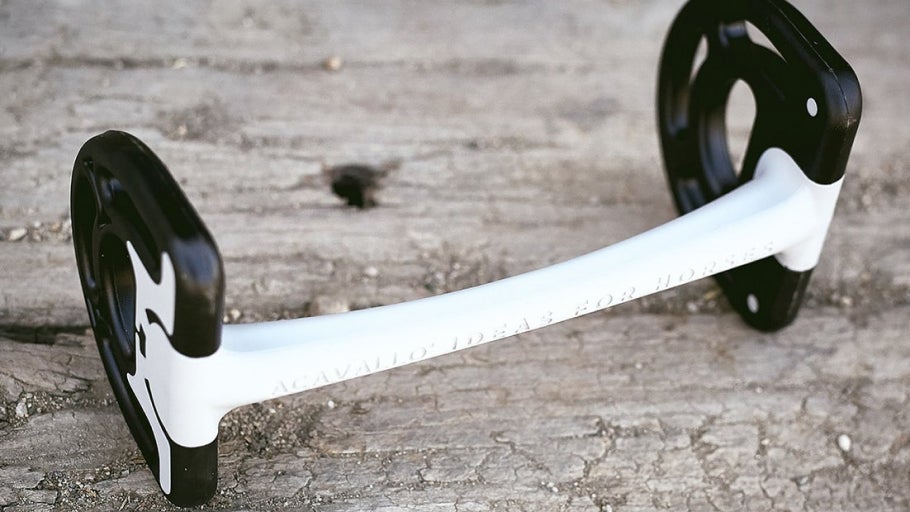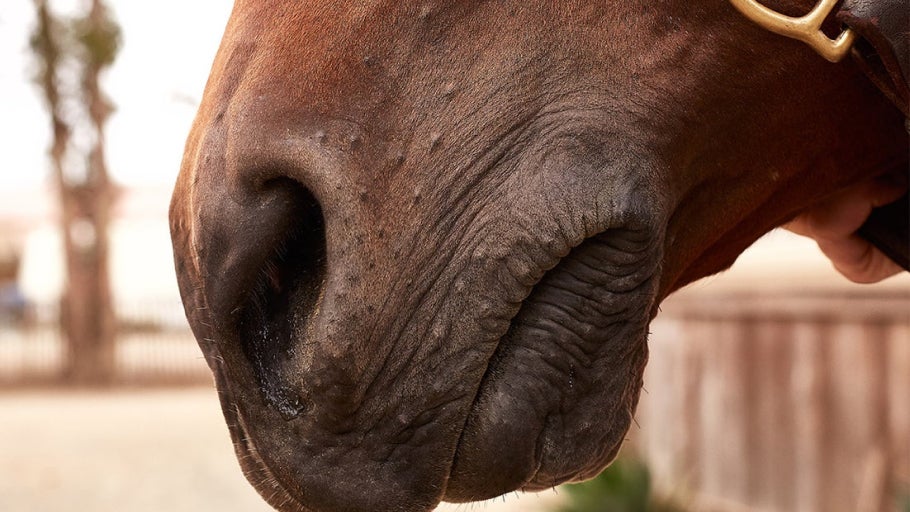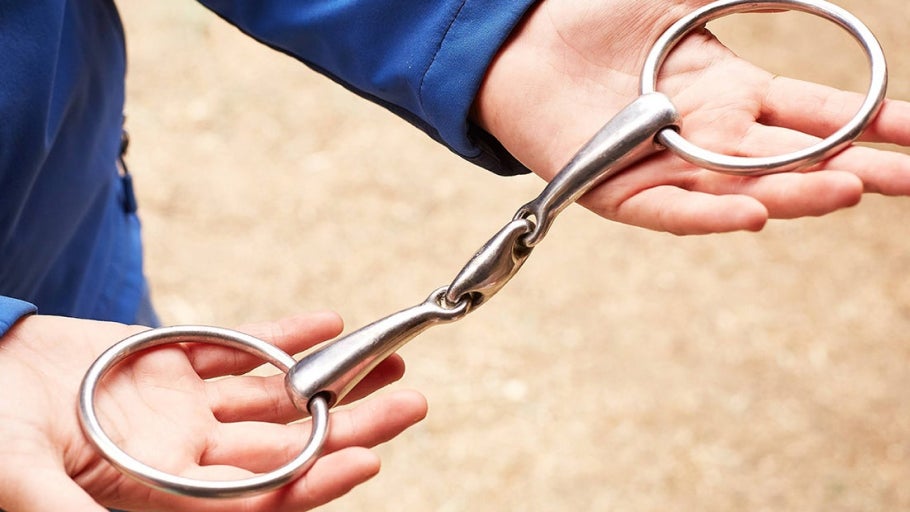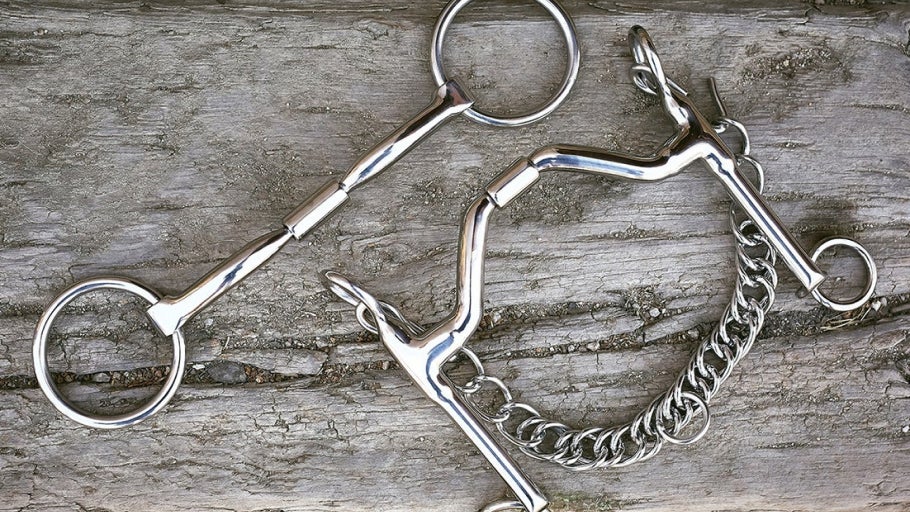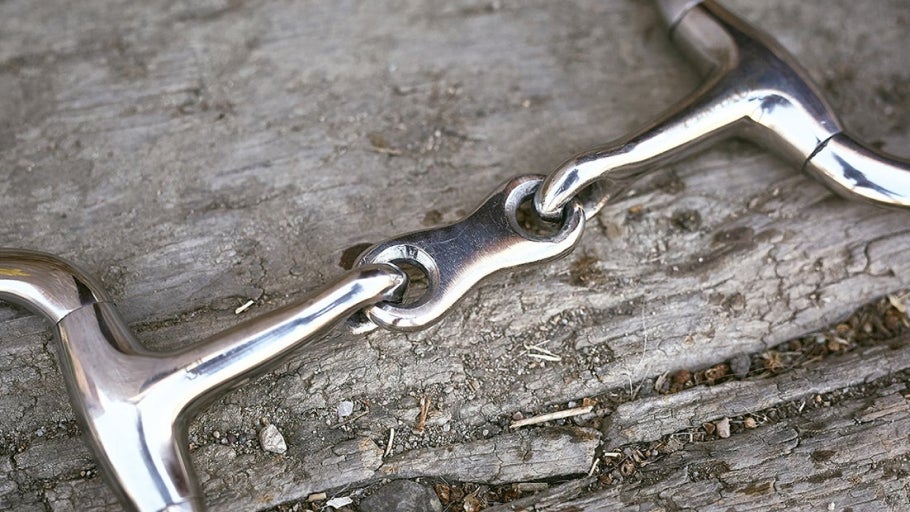
Horse Bit Cheekpieces
Buying Guide
Have you ever found yourself standing in a tack store, staring at a wall of bits and feeling a 'bit' confused? With different cheekpieces, mouthpieces, and materials, there are thousands of bits on the market to choose from. To help you sort through all those options, we've put together several buying guides that break down the differences between bits, so you can choose the right one for your equine partner.
In this guide, we will walk through the common styles of cheekpieces (the part you see on the outside when the bit sits in the horse's mouth), and how these different cheekpieces can work through direct or indirect pressure. We'll discuss D-ring, full cheek, eggbutt, loose ring, Baucher, gag, pelham, Kimberwick, shank, hackamore, combination bit, and Weymouth and Bradoon cheekpieces. Without further adieu, let's dive into the varying horse bit cheekpieces!
Direct vs. Indirect Bit Pressure
Before we address different types of cheekpieces, it will be helpful to understand the difference between bits that use direct and indirect pressure. Snaffle bits that are attached directly to both the headstall/bridle and reins engage direct pressure; this means that when the rider puts pressure on the reins, the horse will feel the same amount of pressure on the bit. In short, it is a 1:1 ratio. Snaffle bits are typically considered milder than shank bits in the right hands, as they do not work off of leverage.
Bits that employ indirect pressure use leverage; when the reins are engaged, double or triple the amount of pressure is exerted on the bit. The ratio can differ because it factors in the purchase, or top arms of the bit, and shank length. For example, if a bit has a 1" purchase and a 2" shank, then the ratio will be 1:2. The general rule is, the longer the shank, the more pressure is put on the mouth. Bits that work off of leverage are typically used by horseback riders who have little to no contact, or those looking for more finesse and control.
Types of Horse Bit Cheekpieces
D-Ring Cheekpiece
Named after the letter it resembles, the D-ring has fixed cheekpieces that prevent the mouthpiece from sliding through the mouth and pinching the horse's lips. The headstall or bridle and reins connect to the "D" and offer the horse direct rein pressure. The D-ring is seen as a good, basic cheekpiece and is an excellent choice for green horses. The fixed rings may help stabilize a horse who is unsteady in the bridle.
Full Cheek Cheekpiece
Full cheek bits feature extending, narrow arms that prevent the mouthpiece from sliding through the horse's mouth and emphasize the rider's turning aids. The bars also protect the corners of your horse's mouth from pinching or rubbing. Full cheeks often have "keepers," which attach the top arm to the cheekpiece of the bridle. This helps stabilize the bit in the horse's mouth and prevents the arms from catching on anything. This particular mouthpiece uses direct pressure to communicate with the horse. It is a very comfortable choice for many horses and a great starter bit for a young or green horse.
Eggbutt Cheekpiece
Eggbutt cheekpieces are fixed oval rings that work similarly to D-rings, as they offer stability for horses who are unsteady in the bridle. This stability can help your horse gain the confidence to stretch into the contact. Because of the oval shape of the rings, the mouthpiece of these bits may slide through the mouth slightly more than the D-ring, but they're still a good choice for green horses. Eggbutt cheekpieces also employ direct rein pressure.
Loose Ring Cheekpiece
A loose ring bit features unfixed, sliding rings attached to a mouthpiece. Because the rings slide through the ends of the mouthpiece, they give the bit some side-to-side motion as well as vertical movement. Loose rings are a suitable choice for horses who lean on the bit to evade the rider's aids. We would not recommend this bit for a horse that is playful in the mouth as it will encourage this behavior, a fixed mouthpiece would be more suitable for this type of horse. Loose ring cheekpieces provide direct rein pressure.
Baucher Cheekpiece
The Baucher is defined by a metal bar that extends upward from the bit ring and attaches to the cheeks of the bridle. The reins then attach to the main ring of the snaffle bit. The long arm of the Baucher can give the impression of a leverage bit, but is actually a direct pressure cheekpiece—providing a 1:1 ratio of pressure. The fixed cheekpieces of a Baucher are designed to keep the mouthpiece steady and provide a stable, framed feeling to encourage a steadier contact; this can help your horse achieve more consistent head carriage. The Baucher is a good choice for horses with sensitives lips and corners of the mouth, because the straight bars help prevent rubbing. The long arm of the Baucher also helps relieve the horse's mouth from constant pressure, which can help fussy and sensitive-mouthed horses to relax into the bridle. The Baucher is known to be either absolutely loved or intolerable by certain horses. This bit is acceptable for both green and well-trained horses.
Gag Cheekpiece
There are many types of gag bits on the market; however, most will produce pressure on the horse's lips and poll. They are typically used for strong horses or during times when the rider needs to lift the horse's head or shoulders, as in barrel racing or eventing. English and Western gag bits can use leverage through shanks, sliding rope, or rotating snaffles. Due to the leverage, gag bits work through indirect pressure.
Pelham Cheekpiece
A pelham is a combination of a snaffle and curb bit in one mouthpiece. The "snaffle rein" is connected to the rings on the side of the mouthpiece, which enact direct pressure. A second "curb rein" attaches to shanks extending below the bit, which multiply the pressure felt from the reins. The action of the curb on the shank tightens a strap or chain under the chin and engages the mouthpiece to put pressure on the tongue and bars of the horse's mouth. Although some riders will choose to use two reins for more finesse, others might go with a pelham converter to engage the snaffle and shank simultaneously. With two reins, you can regulate how much leverage you want from the bit; for this reason, this bit can be technical to use and is not recommended for a child or beginner rider. Pelhams encourage the horse to bend at the poll, without the bulk of two separate mouthpieces as in a double bridle. This bit is recommended for a horse that can be strong and unstable in the bridle.
Kimberwick Cheekpiece
Similar to the pelham, the Kimberwick (or Kimbelwick) combines aspects of a snaffle and a curb bit into one mouthpiece. Unlike the pelham, the Kimberwick's mouthpiece attaches to a "D" cheekpiece with a variety of leverage options. This allows the rider to pick how much pressure is exerted on the mouthpiece and curb strap or chain. The Kimberwick is designed to offer the rider more control and encourages the horse to lower its head.
Shank Cheekpiece
Shank bits use leverage to communicate with the horse. These cheekpieces can come in short or long versions with varying degrees of intensity. Generally, shorter shanks are less intense than longer shanks because long shanks take less rein pressure to communicate with the mouth. Another factor in shank severity is the angle at which the shank sits. It takes less rein movement to cue a straighter shank bit, and straighter shanks tend to give the horse less warning that the bit is being engaged. On the other hand, a swept-back shank gives the horse more warning because the rider must pick up the reins to make contact on the bit. Riders who choose shank bits typically have little to no contact and use small cues to communicate with their horse.
Hackamore Cheekpiece
A hackamore, or bridle without a bit, works like a curb or leverage bit but with no mouthpiece. Although designs may vary, most hackamores exert pressure across the nose, jaw, and poll. Hackamores are typically broken up by which discipline they are suited for and can be made from different materials, such as leather or rawhide. These "non-bits" are seen as a good choice for horses who cannot tolerate a bit or may have dental issues. Although riding without a bit may seem to be a less harsh alternative, it is important to note that hackamores can still be quite strong for a horse and should be used with care.
Combination Cheekpiece
A combination bit is a hybrid of a snaffle bit, a shank bit, and a hackamore. Depending on the pressure exerted on the reins, different parts of the horse's head can be influenced. The bit first acts on the nose, poll, and chin; when the rider continues to engage the reins, the mouthpiece rotates into the tongue and bars of the mouth. Combination bits are unique, because they can be appropriate for everything from green horses to schoolmasters.
Weymouth & Bradoon Cheekpiece
The bits used on a double bridle are a Weymouth (or curb bit) and a bradoon (or snaffle bit). The bradoon is similar to a loose-ring, but it has smaller rings and attaches to its own headstall. The Weymouth attaches to the double bridle's headstall and can employ all the leverage that a curb bit does. The rider can choose to engage either the snaffle rein, the curb rein, or both, giving them the ability for subtle and stronger commands. Weymouth and bradoon combinations are typically seen in upper-level dressage. This bit is for educated horses and does not suit a green horse.
Closing Thoughts
We hope our guide on common bit cheekpieces clears up some confusion when it comes to picking a bit. One thing to note is that not every bit is suitable for every horse, so you should consider your trainer's or veterinarian's suggestions as well as any history your horse has with bits. It might take some trial and error, but you're sure to find the perfect bit for you and your favorite equine! Please reach out to our friendly customer service team at info@ridingwarehouse.com or at 1-800-620-9145 should you need more direction on what cheekpiece will suit your horse best.
Related Articles

